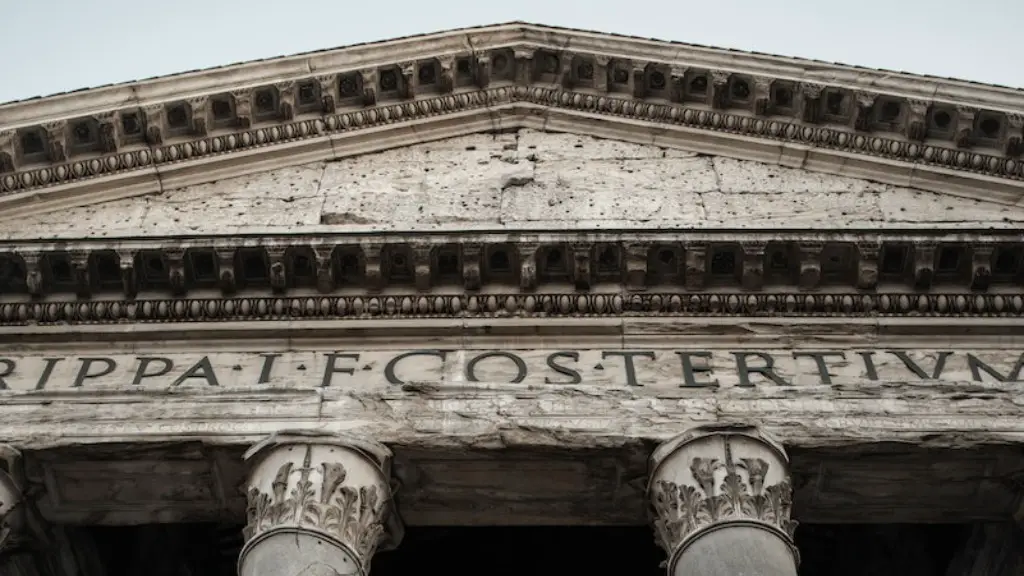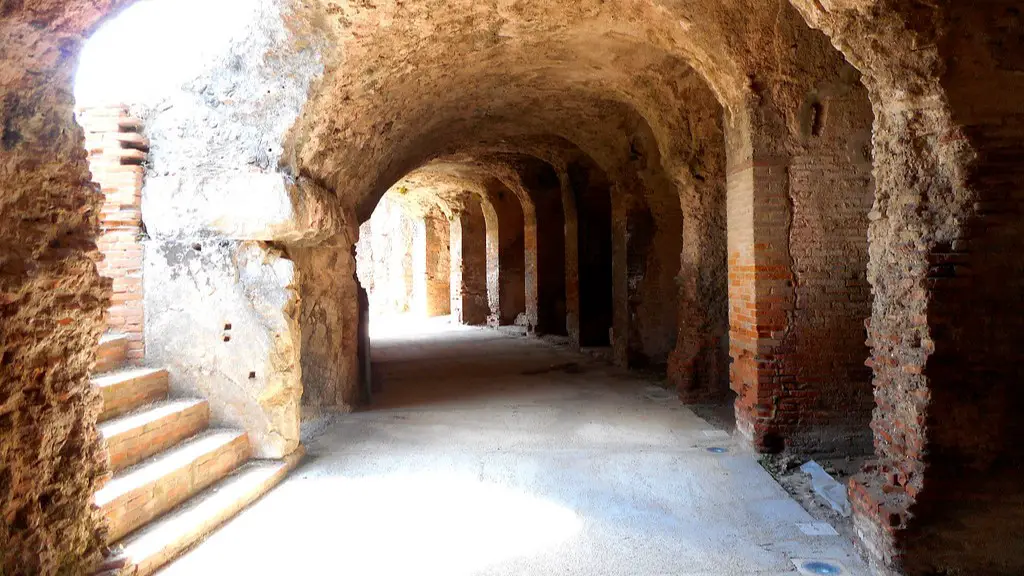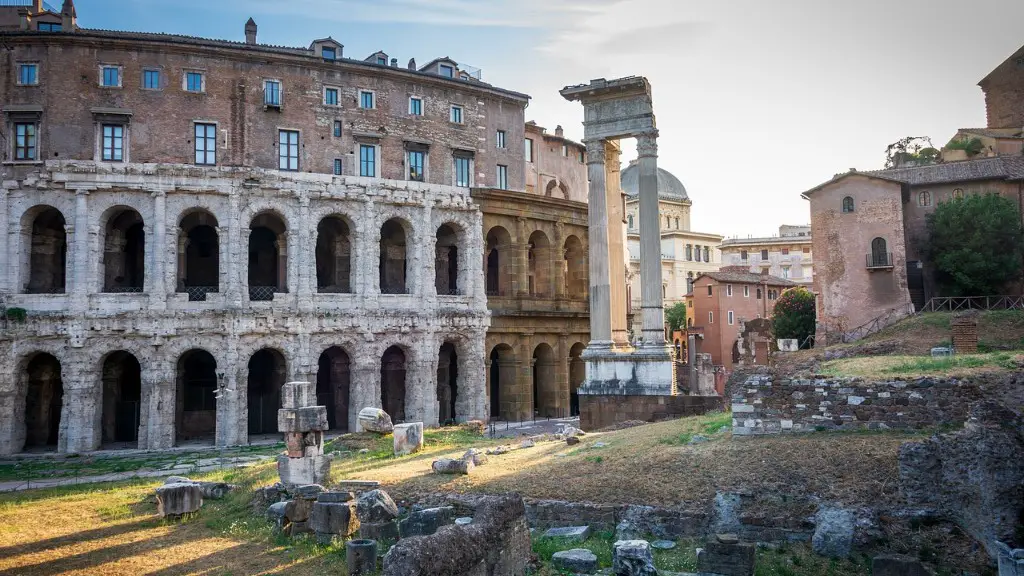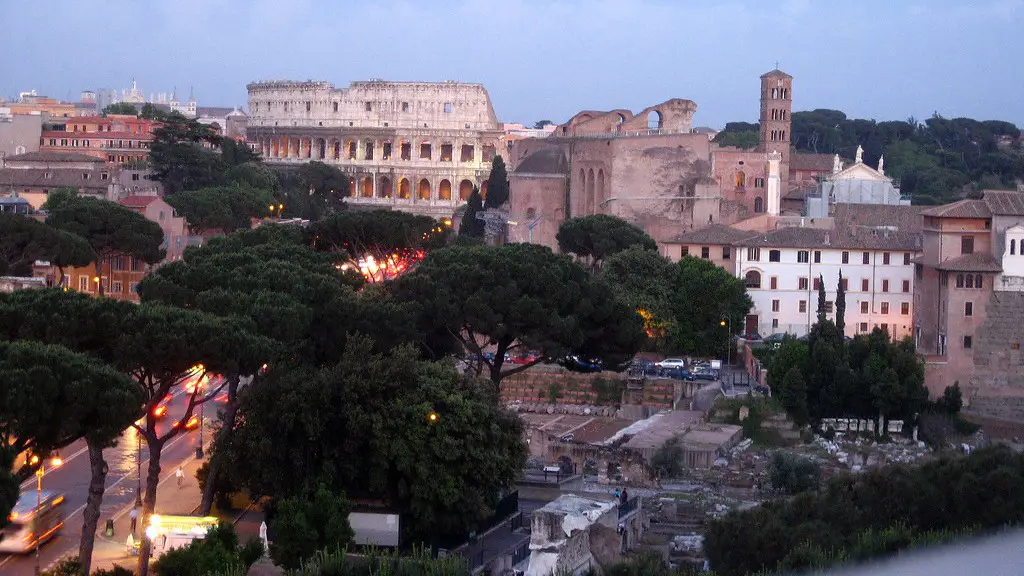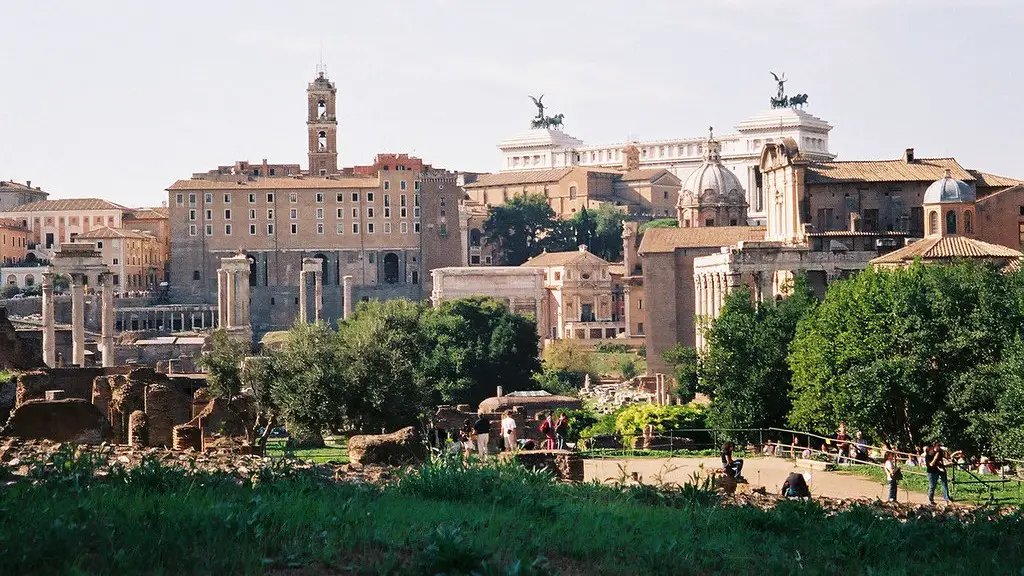Overview of Ancient Rome
The ancient Roman civilization was one of the most influential empires in the history of the world. It began around 753BCE and ruled over much of Europe, the Mediterranean, and parts of Africa and the Middle East for over a thousand years until its fall in the 5th century CE. It was a major cultural, aesthetic and political force in the world, and its legacy can still be seen today in the form of art, architecture, engineering, law, and many other aspects of modern life.
Ancient Rome was a complex city, with a sprawling network of roads, bridges, public baths, temples, and other public works projects. It was the centre of the Roman Empire and the largest city in the world at the time. It was an organised and ordered society, established by laws, regulations, and punishments. People lived in homes made of stone, brick, or concrete and dressed in the finest fabrics. They ate a variety of foods, celebrated festivals and religious ceremonies, and partook in public events and celebrations.
The population of ancient Rome was extremely diverse. There were tribes of Gauls, Greeks, and Jews who lived in the city. Slaves from conquered lands were also brought to Rome. Although there was a great deal of violence and oppression in ancient Rome, it was also a very advanced society for its time and many wars were fought to expand its boundaries.
The economy of Rome was based on agriculture, industry, commerce, and trade. In addition to basic goods and services provided by farmers, craftspeople, and merchants, Roman traders also brought goods from all over the world, establishing long-distance trade routes. Rome was fortunate to be in a position to take advantage of trading opportunities, as many resources needed by the city were imported from foreign countries.
The most noticeable aspect of ancient Rome was its government. The Senate was the most powerful body in the city, made up of noble families and influential figures who ruled the city. They had the power to pass laws, levy taxes, and declare wars. The Senate was filled with a powerful group of citizens including senators, consuls, tribunes, and more. Augustus Caesar was the first Emperor of Rome and, although he was an autocrat, he maintained an efficient and orderly government that lasted for centuries to come.
The Arts
Roman art was a reflection of the city itself: grand, impressive, and full of power. Painting and sculpture were particularly valued and were used to attempt to capture the beauty and grandeur of the Roman Empire. Ancient Roman artists created works like the bronze sculptures of the Laocoön and the Apollo Belvedere, the frescoes of Pompeii, and the ‘Ara Pacis’. In addition to sculpture and painting, Romans were also proficient in architecture, with the Colosseum, Pantheon, and Aqueducts being some of the most iconic examples of Roman architecture.
The Romans developed literature, the most famous being Virgil’s Aeneid which recounted the story of Aeneas, a trojan hero who survived the fall of Troy and went on to establish the great Roman Empire. Other famous Roman works included Ovid’s Metamorphoses and Cicero’s speeches and works of philosophy. Roman poets such as Horace and Catullus wrote about various topics, from love and loss to politics and morals.
Romans also had a great love for the performing arts, including theatre, music and dance. There were a variety of different performances held in the city, from gladiator fights and chariot races to plays and concerts. Roman music was full of emotion, using instruments such as flutes, harps, and trumpets. One of the most popular forms of Roman theatre was mime, which depicted the everyday life of citizens.
Religion
Religion was an important part of ancient Roman life. The main Roman gods and goddesses were Jupiter, Mars, Minerva, Venus, and Apollo. Other Roman gods included Neptune, Bacchus, Pluto, and many others. The Romans also believed in prophecy and oracles, and their priests consulted the gods when making important decisions. They built temples to honour their gods, celebrated religious festivals and rites, and held sacrifices so that the gods would protect them.
Romans also adopted many of the gods, customs, and beliefs from their neighbours, such as the Egyptians. People from many different regions and cultures lived in the city of Rome, and it wasn’t uncommon for Romans to observe multiple religions. They also believed in the power of magic and many consulted magicians for advice and help. People from all classes and walks of life in Rome believed in these practices, and some even made a living out of it.
Social Structure
The social structure of ancient Rome was highly stratified, with citizens divided into classes. The upper class, or ‘Patricians’, were the wealthy and powerful citizens who controlled politics and made the most important decisions. The middle class, or ‘Equites’, were the businessmen and merchants, who had a successful career but were not as wealthy or powerful as the powerful patricians. The lower class, or ‘Plebeians’, were the common citizens, who were normally farmers, laborers, or slaves.
The rank of a person in society was largely determined by their social class, and people from the lower classes were usually considered inferior to those from the higher classes. Patricians were the only citizens who could hold political office and run for consulship, and they also enjoyed a high degree of respect and influence. The Plebeians, however, had much less political power and their opinions often went unheard.
Wars and Expansion
Ancient Rome was a great military power, expanding its territory and influence through military conquest. The Romans established a large number of colonies throughout Europe, North Africa, and the Middle East. They fought great battles with rival empires such as the Carthaginians, and eventually succeeded in conquering much of the known world. Rome was also renowned for its military discipline, which set it apart from the other civilizations of its time.
Rome was famed for its construction of grand monuments and public works. It was also very successful in developing its infrastructure and transportation system, connecting the far reaches of the Roman Empire with its capital in Rome. The roads, bridges, and aqueducts created by Rome remain as a testament to its engineering ability.
In addition to military expansion, Rome also spread its cultural influence throughout the world. Its artworks, architecture, and literature were admired and copied by numerous civilizations, and its language, Latin, was adopted by many countries in Europe and across the world. The Romans even had an influence on law and the philosophy of government, and their system of government can still be seen today in many countries.
Conclusion of Ancient Rome
Ancient Rome was one of the most influential empires in the history of the world. It was immensely advanced and powerful, with a culture that has had an influence on modern society. The city of Rome was organized and prosperous, with a highly stratified social structure and a strong economy. Religion, art, and literature were highly valued, and Romans even spread their cultural influence throughout the world with their language, Latin. The grand monuments, impressive engineering projects, and great battles fought by Rome still stand today as a testament to its power and greatness.
